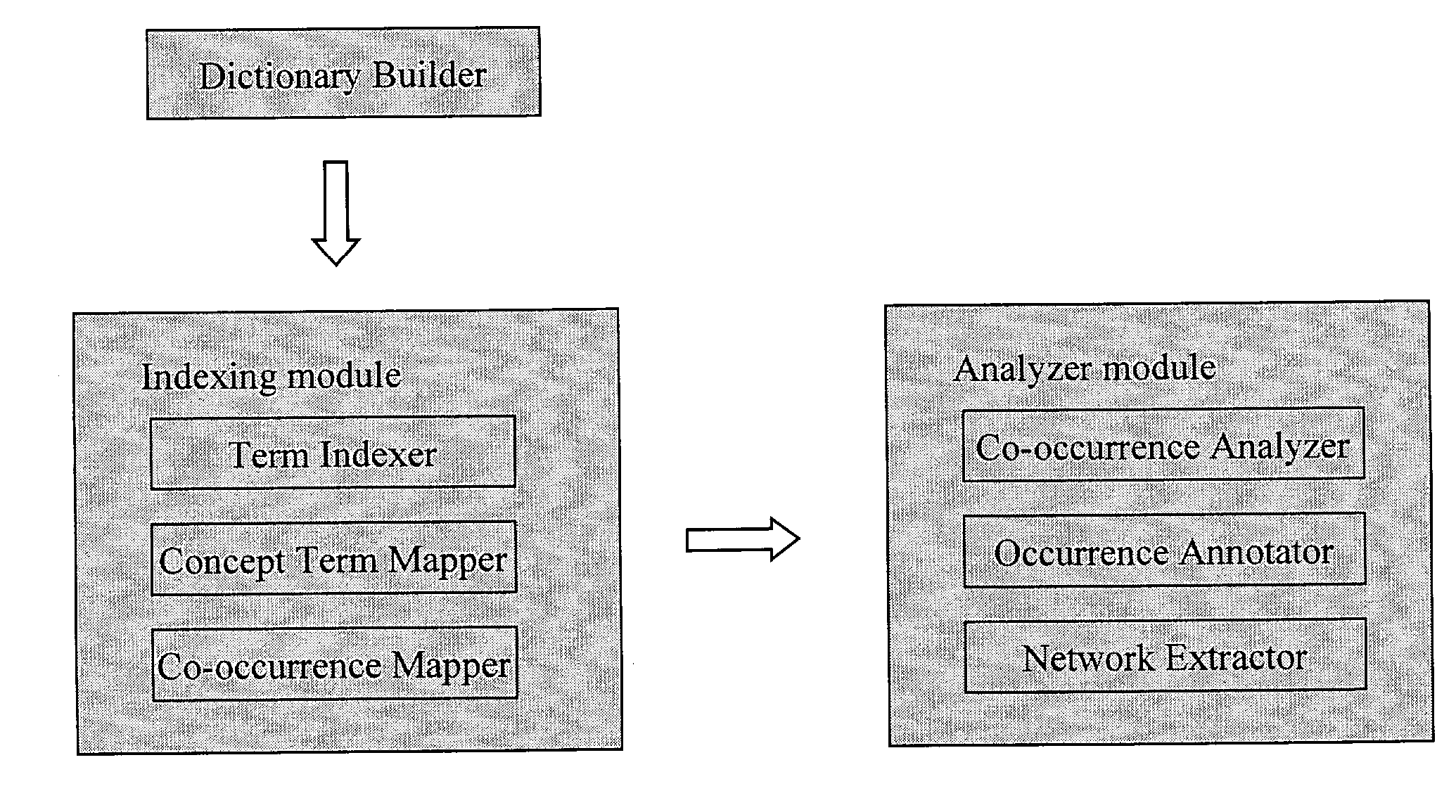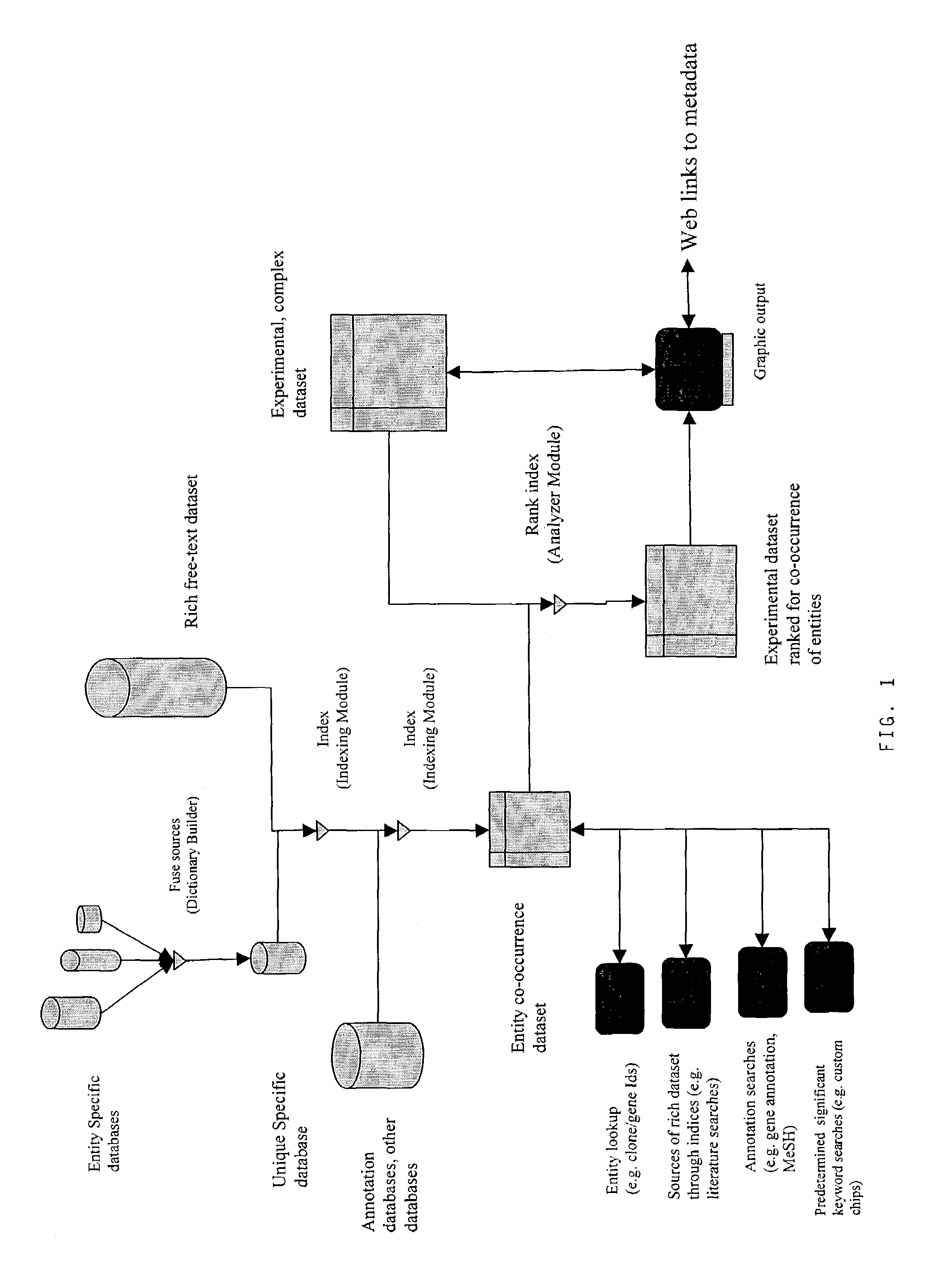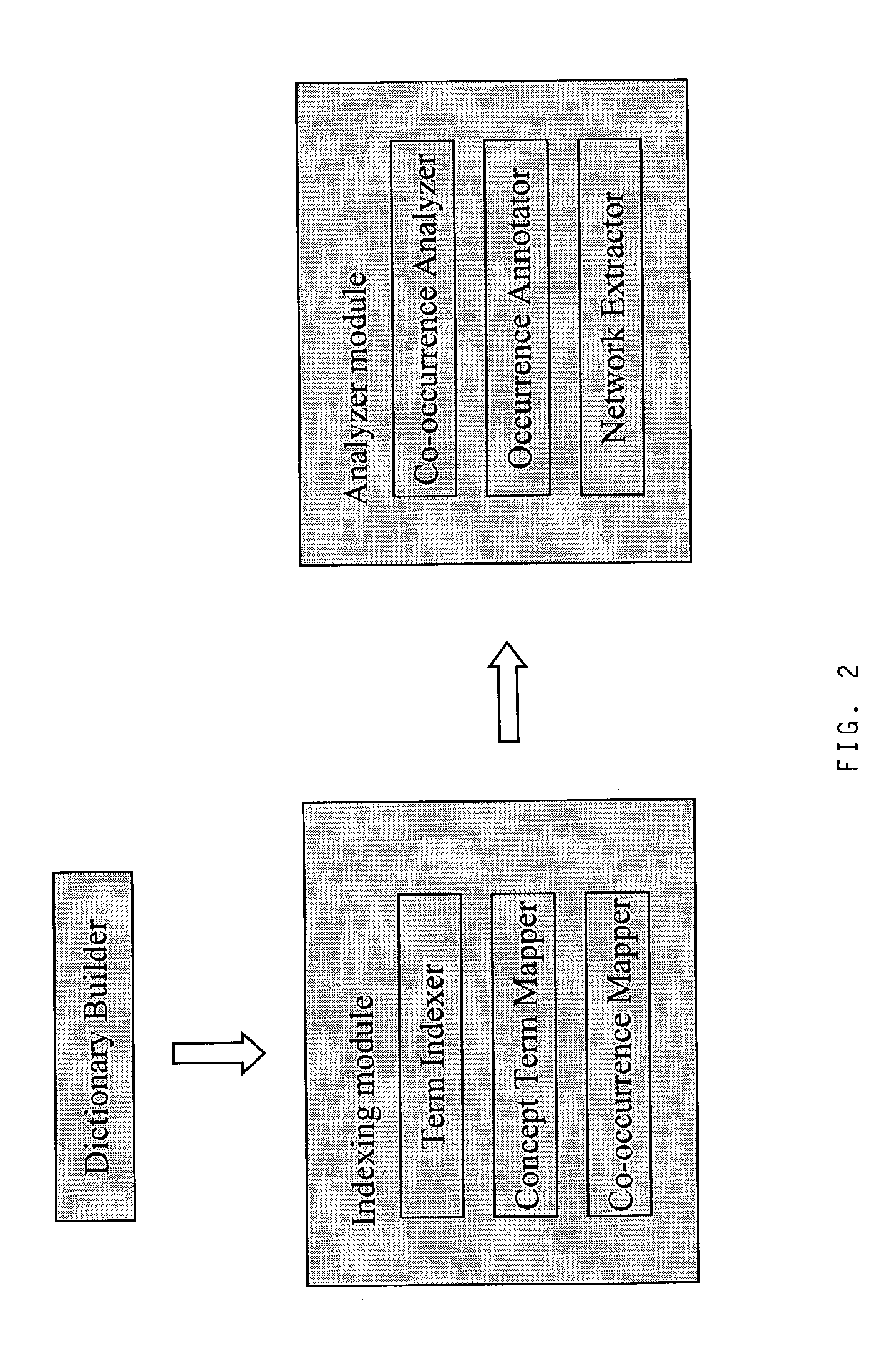System for analyzing occurrences of logical concepts in text documents
a text document and logical concept technology, applied in the field of information extraction, can solve the problems of limiting the possibility of utilizing this knowledge in the computerized analysis of data from such domains, cumbersome navigation in the knowledge space of such domains, and the complexity of information retrieval in many knowledge domains, so as to improve the effect of information retrieval
- Summary
- Abstract
- Description
- Claims
- Application Information
AI Technical Summary
Benefits of technology
Problems solved by technology
Method used
Image
Examples
Embodiment Construction
[0032]FIG. 1 depicts how entity specific source databases are fused into a single unique concept database using a Dictionary Builder module, see FIG. 2. Following this, target concepts and ancillary concepts are indexed in the text document data, using the unique specific database, a rich free-text dataset, annotation databases and other databases, by means of an Indexing Module, again see FIG. 2. After indexing, and the creation of an entity co-occurrence dataset, concept occurrences are analysed and ranked using an Analyzer Module, also see FIG. 2. An experimental, complex dataset, using the analyser module, creates an experimental dataset ranked for-co-occurrences of entities. This can be used to create graphic output, and this can be linked by web links to metadata.
[0033]Linked to the entity co-occurrence dataset are: entity lookup (e.g. clone / gene ID's); sources of rich dataset through indices (e.g. literature searches); annotation searches (e.g. gene annotation, MeSH); and pre...
PUM
 Login to View More
Login to View More Abstract
Description
Claims
Application Information
 Login to View More
Login to View More - R&D
- Intellectual Property
- Life Sciences
- Materials
- Tech Scout
- Unparalleled Data Quality
- Higher Quality Content
- 60% Fewer Hallucinations
Browse by: Latest US Patents, China's latest patents, Technical Efficacy Thesaurus, Application Domain, Technology Topic, Popular Technical Reports.
© 2025 PatSnap. All rights reserved.Legal|Privacy policy|Modern Slavery Act Transparency Statement|Sitemap|About US| Contact US: help@patsnap.com



